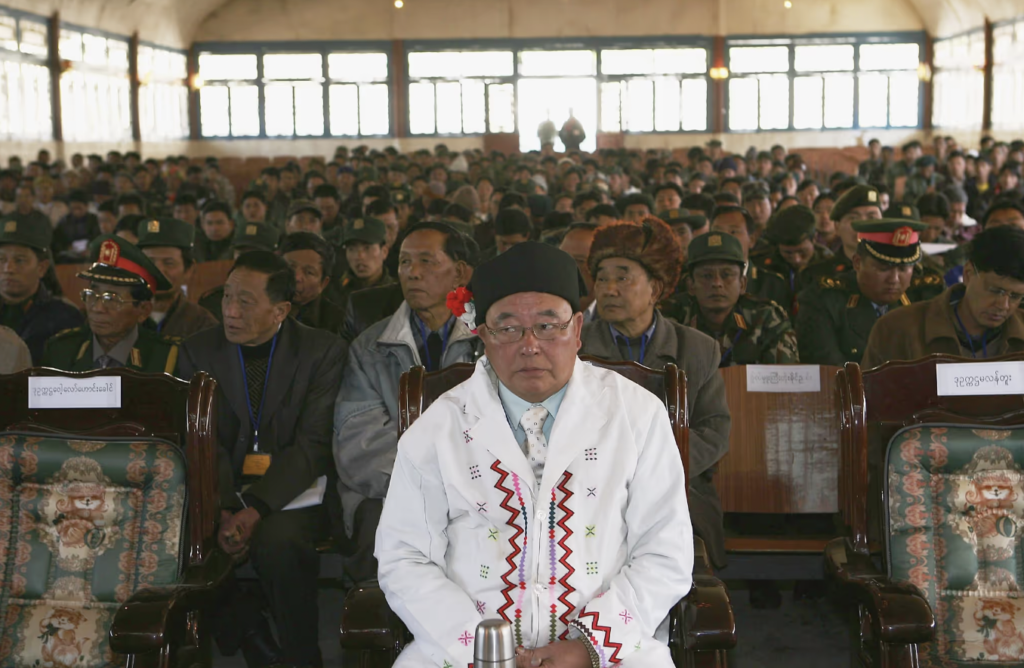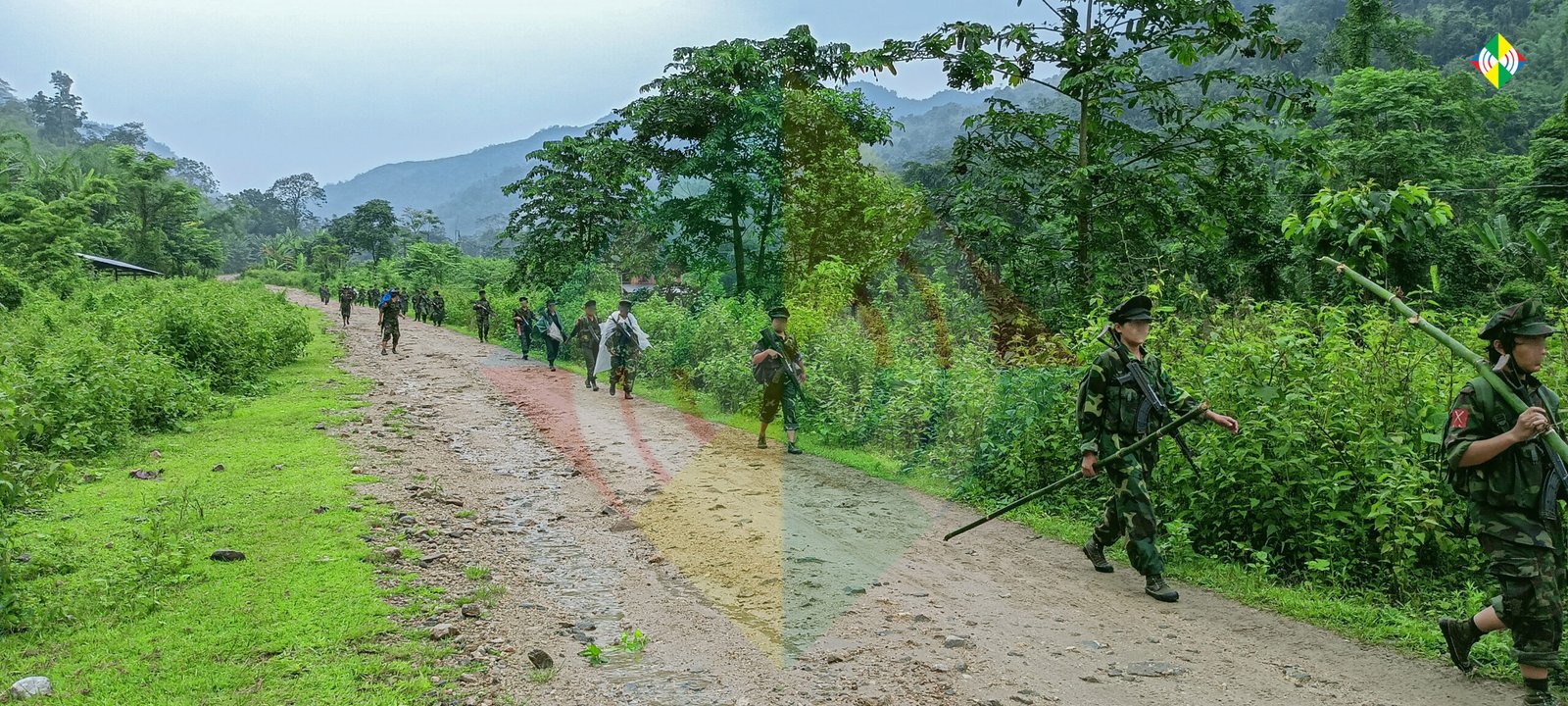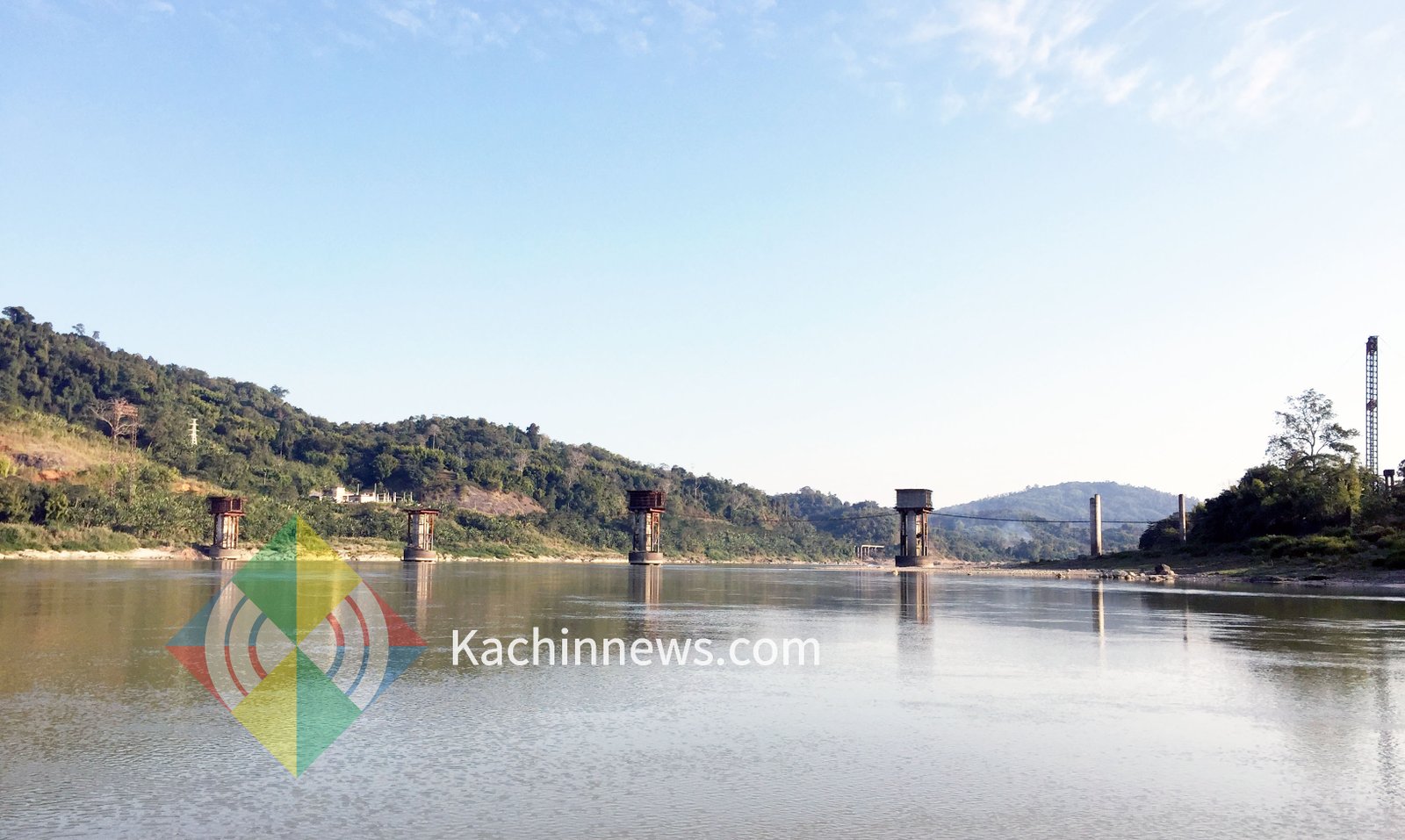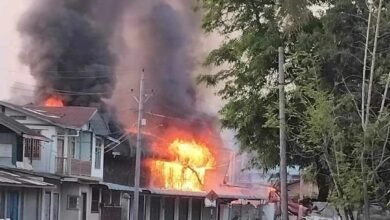
After last year’s coup, Burma has become the world’s largest supplier of rare earths. According to a six-month report by Global Witness, which tracked the toxic mining of the mineral needed for computers and most electronic devices, state-owned and private Chinese companies, under the protection of a Kachin Border Guard Force (BGF) and People’s Militia Force (PMF), are mining an area the size of Singapore in Special Region 1 in eastern Kachin State.
Global Witness reported satellite photos of more than 2,700 catch basins in 300 locations in the rare earth mining area in Pangwa, which is controlled by the armed groups that have the support of the military regime to illegally mine the mineral.

Rare earth mining leads to massive destruction of biodiversity and the ecosystem. Much of Pangwa is already contaminated, posing a threat to the local population and future generations.
“When the soil is poisoned, nothing can grow. People cannot live in the area if the whole ecosystem is destroyed…Plants cannot grow…Water, air and soil are damaged because the ecosystem has been severely affected,” Rev Lachyung Hawng Hkawng, an environmentalist from the Kachin ethnic group, told KNG.
Rare earths are essential for smartphones, computers and many other electronic devises. But 90 percent of their value are to make permanent magnets used in motors, as well as generators for electric vehicles and wind turbines, according to Global Witness. Burma exported $1.5 million worth of rare earths to China in 2014. However, since the military coup, this value has increased to $700 million.
Mining in the Pangwa Mountains near the Chinese border is controlled by the BGF, led by Zahkung Ting Ying, and the PMF. The leaders of the armed groups receive a lot of money from the Chinese companies. However, neither has carried out environmental impact assessments for mining, so the companies have a free hand in mining the rare earths.
”There is a high risk that revenues from rare earth mining are being used to fund the military’s abuses against civilians, which have intensified since its February 2021 coup,” says Global Witness’ report Myanmar’s Poisoned Mountains.
A Pangwa farmer, who wished to remain anonymous, told KNG: “It is now very difficult to sell our fruit to Chinese traders. They complain that our vegetables and fruits are grown on poisoned land, and they don’t want to buy them.”
According to the Global Witness report, there have been over 100 landslides in the Chinese city of Ganzhou caused by rare earth mining. And many locals suffer from osteoporosis, respiratory diseases, gastrointestinal, skin and eye problems and other health problems. After many of the mines in China’s Jiangxi province were closed, mining in Burma has increased.
To extract the rare earths in Special Region 1, workers have to dig many holes in the mountain. Then they pour ammonium sulphate solution into the holes, which liquefies the soil. The chemicals penetrate the mountain and workers drain the solution into basins where the minerals are discharged in a process known as in situ leaching. When the work is complete, the area is poisoned, and workers have to find a new area to start the process all over again.
Already, the impact of rare earth mining on local ecosystems and for local’s livelihoods and access to safe drinking water has been devastating. Residents can’t fish, swim or wash in local rivers and animals, including their livestock, have been poisoned by the toxic water.
This is particularly worrying because the mountains are home to dozens of rare and endangered plant and animal species, including red pandas and gibbons, both of which are endangered.
“Once all the rare earths in the mountains are mined, it’ll be difficult for people to survive in the area,” warned Lachyung Hawng Hkawng. It’s time to stop the excessive mining if there’s to be any chance of preserving biodiversity in the region, he said.
There’s also concern that hazardous waste from the mining area is seeping into the N’Mai Kha River, which is a tributary of the Ayeyarwady River (also called the Irrawaddy), Burma’s largest river, whose drainage basin covers 156,100 sq mi and on which two-thirds of the country’s 54 million people depend.




